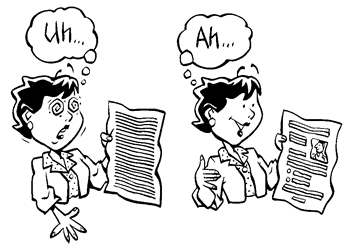Today we continue discussing workers’ compensation injuries and procedures. While no one plans to get hurt on the job, there are some things you need to know if you find yourself dealing with the workers’ compensation system. If you are unfortunate enough to find yourself injured on the job you may be scheduled for a hearing or more likely receive an administrative decision regarding your claim. Many people who find themselves attending a hearing or in receipt of a decision are often times confused by the terminology. As a practitioner of workers’ compensation I can tell you that there are a lot of terms of art, abbreviations and the like that we use on a regular basis during the course of a claim.
One of the most common abbreviations we use is ANCR or ODNCR. For example, if you have an injury to your back you might receive a decision indicating ANCR back. Without ANCR or ODNCR, you cannot have a successful claim for workers’ compensation benefits. But what does it mean? ANCR stands for accident, notice and causal relationship. ODNCR stands for occupational disease, notice and causal relationship. Here I will discuss each of the components.
- An ACCIDENT or OCCUPATIONAL DISEASE is one arising out of and in the course of the employment. Just because you get injured or sick on the job does not definitively mean you are entitled to file a claim. For example, if an employee gets assaulted on the job by a jealous spouse because of a domestic dispute, the injuries sustained would not be compensable as there is no work connection. If you are injured solely as a result of intoxication from alcohol or drugs while working, you would not be able to obtain workers’ compensation benefits. Similarly in occupational claims not only do you have to show that it occurred in the course of employment but that it must flow naturally from the work involved.
- The second component is NOTICE specifically notice to your employer that you were hurt on the job. The law prescribes that notice be given to the employer within 30 days of the accident and should be in writing although oral notice may be accepted. While many jobs have their own internal notice requirements, the law in New York State is 30 days. Notice is different than filing with New York State. The Statute of Limitations to file a claim with the New York State Workers’ Compensation board is 2 years. You may file within the 2 year statute but still lose your claim if you didn’t file proper notice with your employer within 30 days.
- Lastly, there must be CAUSAL RELATIONSHIP, between the job and the injury sustained. Is the injury you are suffering from as a result of the accident which occurred on the job. In order to prove this you must have a medical report from a qualified medical provider. The doctor should be a licensed to practice under the workers’ compensation and familiar with the system which includes the requisites necessary in order to file a proper report. If you are able to confirm these components, your case may be accepted or established. It is imperative that these steps are followed as it is possible that a very serious injury may sustained but never established because it fails to follow what has been directed.
Prior results do not guarantee outcomes.
Attorney Advertising.






